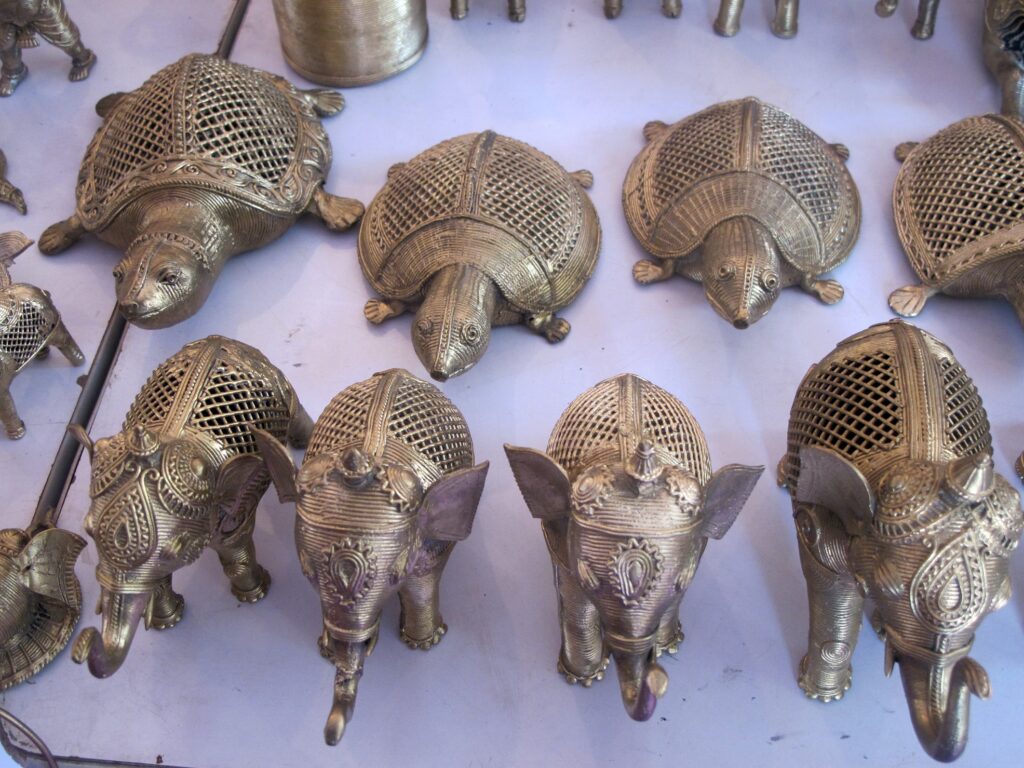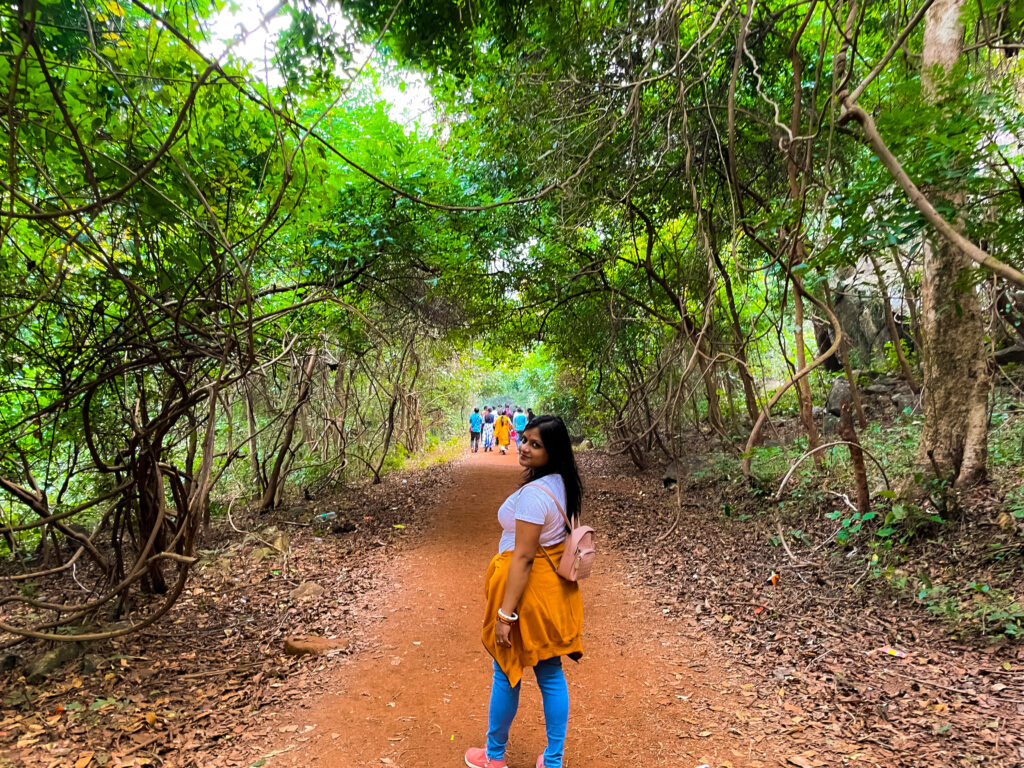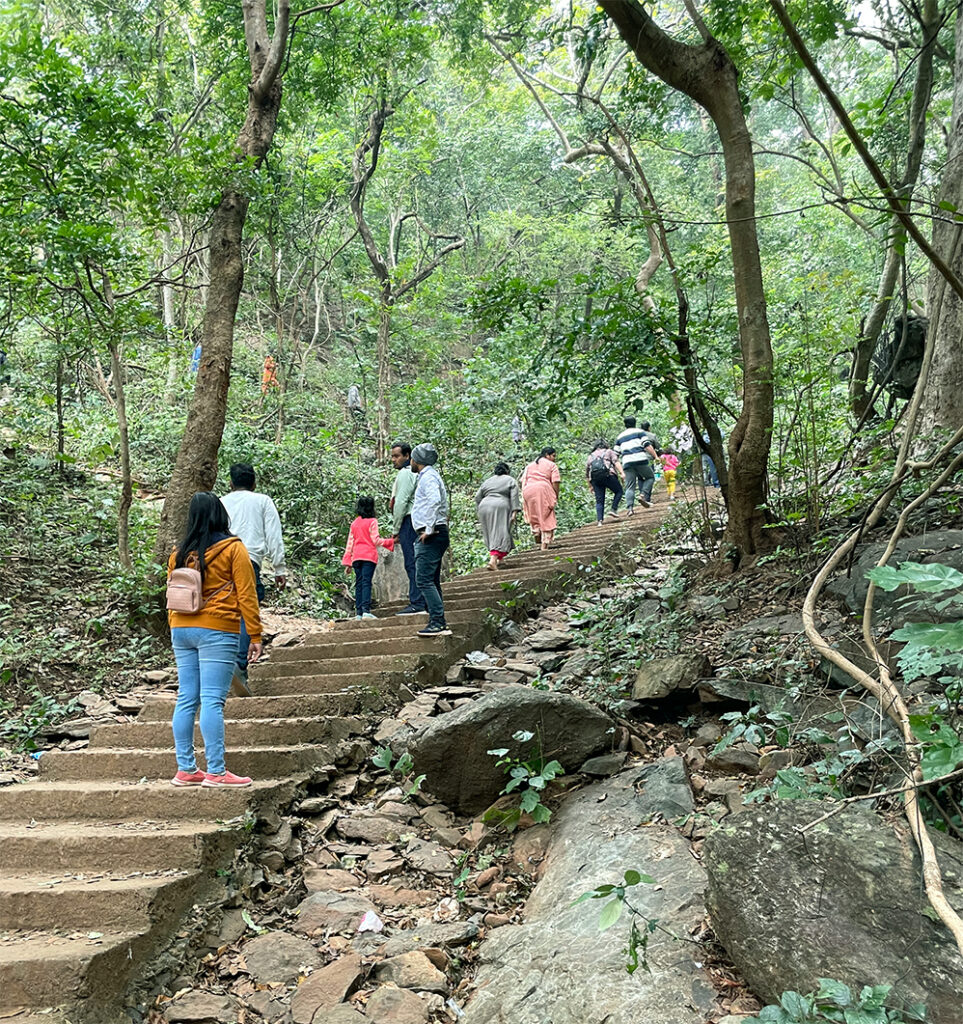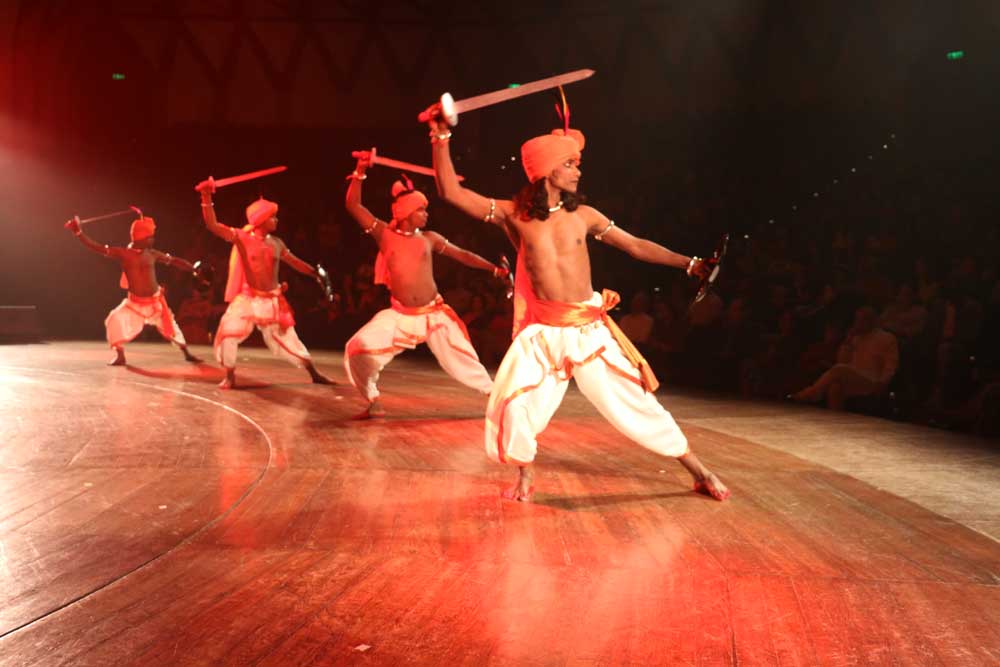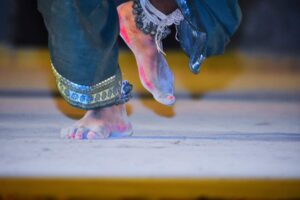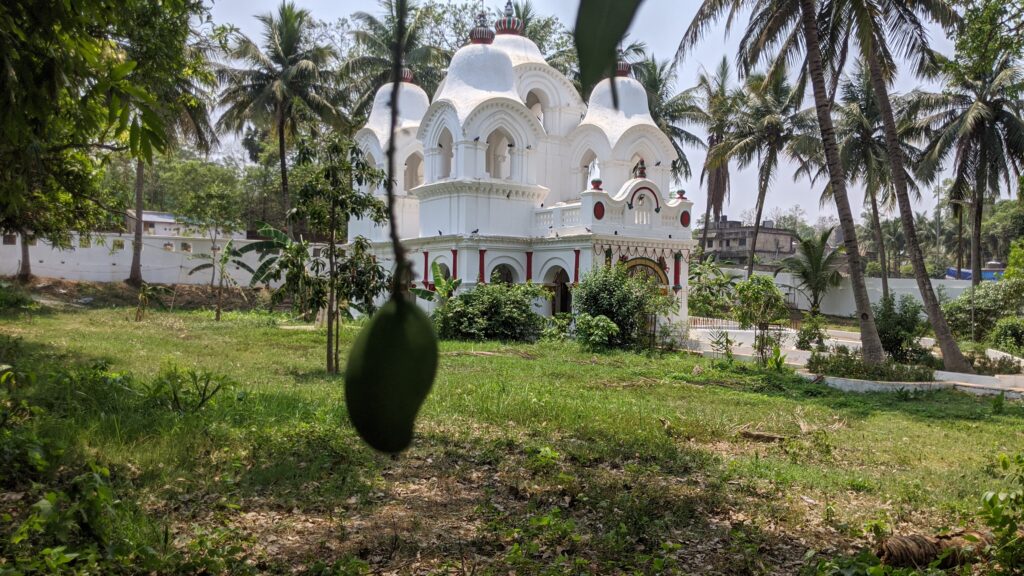Recent News
The Ministry of Defence on Tuesday granted working permission to the state government for development of the airstrip at Rasgovindpur near Amarda Road in Mayurbhanj district. The ministry has conveyed the Defence Research and Development Organisation (DRDO) and Director General Defence Estates for allowing the state government to develop defence land measuring 160.35 acre at Amarda Road on the basis of cash compensation of `26.03 crore.
Setting the terms and conditions for grant of permission, the ministry said a separate board of officers (BOO) will be convened to ascertain exact location, demarcation of land, its cost and modalities of transfer, and security and safety measures, government and private assets and cost of their demolition, relocation or reconstruction before handing over the land to the state government.
History
True to its tagline- India’s best kept secret, Odisha, is indeed a land that has stowed away many great true tales and stories that are slowly unravelling. These stories are proof that Odisha is a hidden gem of India. One such incident is from Amarda Road, in Mayurbhanj district. It is hardly known to many people that the benevolent skies of Odisha had witnessed the crash of two aircrafts. They had collided against each other and resulted in the deaths of 14 airmen on board. Renowned historian Anil Dhir, conducted an in-depth research of the Amarda Road airstrip and unraveled many facts. My City Links visited the abandoned airstrip and talked to people to know more about the incident and its current state now. Although short, it has a secret illustrious history which has never been made public.
Amarda Road Airstrip
The Amarda Road airstrip has played a vital role in the defence of India during the second World War. It came into existence during the war as a forward airfield against the Japanese conquest of Burma. Known to be the longest runway in Asia, measuring over 3.5 km, this large strip served its purpose well as a landing ground for planes and also as a training space for special bombing missions. The Amarda Road airstrip spreads across an area of nearly 900 acres.

“This airstrip was built in the 1940’s at a cost of ₹3 crore and eventually it was abandoned after the war. Owing to the nearby Amarda Road railway station, it was named as the Amarda Road Airfield. Seven decades after the base was made, the remains of the airfield are still intact,” Anil Dhir pointed out.
Now this airstrip is known as the Rasgovindpur Airstrip. Even today it is the biggest air complex of the continent. The total runways, taxiways, aprons, etc were more than 60 kms. “As an airfield, Amarda Road fell on the supply route for the Nationalist Armies of China in their fight against the Japanese. Aircrafts from the Royal Air Force (RAF) and the United States Air Force (USAF) would regularly fly from this space to China across the infamous hump route over Arunachal and East Tibet,” shared Dhir.
A localite in his nineties shared his memory of the airfield. “I was barely 9-10 years old when this place was frequented by many people and we saw huge aircrafts. This was way before India got independence. My family and I were evacuated to a distant village from here. We heard stories about secret missions going on for which no one was allowed there. When the crash happened, there was a lot of hullabaloo. Recently people have come enquiring about the place,” he shared.

Backstory
During a training exercise on July 26, 1945, two World War II aircrafts- British Royal Air Force B-24 Liberator four-engine bombers EW225 and EW247 collided mid-air at a low altitude of less than 2000 feet. These aircrafts were part of a six-plane contingent from the Air Fighting Training Unit engaged in a formation flying exercise. The collision left 14 airmen dead due to the severity of the collision over the skies of Odisha. The debris fell into paddy fields swollen from the monsoon rains.

Immediately after the crash, search teams were dispatched to reach the crash site. “Given the remoteness of the area, the lack of roads and bridges, and the severely limiting monsoon conditions, little could be done with immediate effect back then. Later there was news of some human remains that were reportedly discovered and then buried on site during the initial search efforts, but the evidence of this is vague and does not suffice, ” said Dhir.
Several weeks after the accident, Squadron Leader Stanley Bennett, the Padre of RAF Amarda Road, made an effort to find the crew. He led a party of twelve men (five RAF members, five or six Indians) on a trek of nearly four days from Amarda Road to the crash site. By that time weather conditions had improved and the monsoon floods had subsided. “The team succeeded in recovering the bodies and buried them in two graves near the crash site. Since the bodies were not immediately found nor the wreckage located, the families of the dead could not be informed about the crash. They were listed as missing in action (MIA). Few family members came to know about the deaths from unofficial sources, some of them months and years later.

The Amarda Road airstrip would have been relegated to deep crevices of history, but unfortunately it has remained just a private affair of a group of people quietly paying tribute and keeping the memory alive.
The deceased
In the Madras War Cemetery in Chennai, there is a set of fourteen graves which were of airmen who had apparently died in a plane crash at Amarda Road. This was discovered by Anil Dhir during his visit there. “There were fourteen individually named headstones arranged side-by-side. But contrary to protocol, the Cemetery Registry had interned them as a Collective Grave. I started a detailed enquiry and also got valuable information and assistance from the Commonwealth War Graves Commission at London. I was then informed by them that back in 1953 the British Army Graves Concentration Unit had exhumed the bodies from their original burial site near Amarda Road and relocated the remains to the newly established Madras War Cemetery,” pointed out Dhir.
The 14 deceased airmen were of different nationalities such as British, American, Dutch, New Zealander, Australian and only one among them was an Indian. Dhir further extended his research to war historians and in the course of six months, he got much more details of the crash. From the United Kingdom Ministry of Defence’s Air Historical Branch, he managed to get more details of the official correspondence along with detailed information on the date and time of the crash and the exact location coordinates. He also made a recce of the area and with the help of an advanced GPS, he could locate the exact site where the aircrafts had fallen.

Most of the relatives of these airmen were very surprised when Dhir contacted them. They had given up hope of knowing anything about the mysterious death/ disappearance of their loved ones. He received heartbreaking letters from them enquiring about more details and information. “One of the deceased airmen, Cyril William Geeson’s brother connected with me and bared his heart out as to how he missed his brother every single day, owing to his mysterious disappearance. He wrote me a personal letter and sent me photographs of his brother (one of the deceased airmen- Flight Sergeant),” he informed.
“Another such response came from Yvonne, the daughter of Peter Ettlinger (one of the deceased airmen- Flight Officer). It was a very emotive surprise when she received my email. Now a retired school teacher aged 77, she was just ten months old when her father was killed in the crash. He had never seen her. She had been researching the crash of her father’s plane for the last 50 years. In fact she had also made three visits to India but could only visit her father’s grave at the Madras War Cemetery as she was unaware of the fact that the Amarda Strip was the actual crash site,” Dhir said.

The revolution of the internet indeed is a boom in connecting people and becoming an easier and faster mode of communication. The historian has managed to find 10 of the dead.
“Just to trace the relatives of the only Indian, P.V. Mathai, it took me three years. Though very strenuous and time-saving it is satisfying to give the people the closure and the true facts that they deserve,” added the historian.
Memorial
On July 26, 2011, local school children, Air Commodore Ran Singh, the Air Officer Commanding of Kalaikunda Air Station, activists and Morada MLA Rajkishore Das gathered at the abandoned Amarda Road Airstrip and laid wreaths for each of the dead airmen, and held a memorial service. For the past 10 years now, historian Anil Dhir who is rightly credited for single handedly digging out the details of the incident, has been leading the memorial service.
“From the 26th of July 2011, every year, we hold a memorial service for the fourteen dead near the abandoned Amarda Road Airstrip. We held the tenth service this year. It is held on the main runway on which locals, including school children, participate and contribute by their presence. Mahatma Gandhi’s all religion prayer along with the Lord’s Prayer is recited along with a few hymns,” shared Dhir.

Even though the memorial service is purely a private affair conducted by Dhir and his team, it has been widely reported in newspapers and magazines in India and abroad. “Despite repeatedly requesting the governments of Odisha and West Bengal to erect small memorials for these airmen at Amarda Road and the crash site, there had been no response. So, I along with a group of well-wishers, decided to set up a museum at the spot. Gandhian, Aditya Patnaik, who is the Director of Mahatma Gandhi Eye Hospital & Research Institute adjoining the airstrip, has proposed to give ample space in the Gandhi Gurukul for setting up a small museum which will highlight the importance of the airbase during World War II,” he added.
On hearing of a museum being erected, the relatives of the deceased airmen have donated memorabilia for the museum. Among the items received are a folding camp cot and a chair, photographs, uniforms, etc. “The work for the museum commenced at this year’s memorial service at the airstrip,” informed Dhir.
One of the students attending the memorial service shared his joy on knowing that the place they reside is of historic importance. “I love to read and know more about the history of our country. It is very interesting. Since my father told me about Amarda Road airstrip and its historical importance, I am intrigued to know more and more. I would love to visit the museum once it is completely set up,” shared the excited lad.

Government’s intervention
It is disheartening to see that the soil of Amarda Road which holds important bits of history is now all forgotten. No details or information of the activities that happened there between 1943 and 1945 exist, not even in government and military records.
“All the infrastructure- offices, hangars, mechanic sheds and plaster walled barracks with thatched roofs- have been ripped down. The land is barren and is used to dry laundry or the farmers use the warm tarmac to sun their grains. The cattle graze along the runway’s edges,” he said.
Anil Dhir has also requested the government to open up the sealed underground bunker, which may hold relics of the period. “The setting up of a Peace Museum was mooted last year and British, Australian, Dutch and US authorities were contacted for material to be displayed to the museum. The response has been very positive,” said Dhir.

Morada MLA Rajkishore Das said that the abandoned airbase would soon be made operational under UDAAN scheme for flights or other aviation related ventures. He also promised that all help would be extended for setting up the museum at the base.


